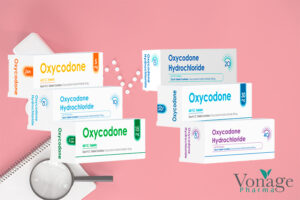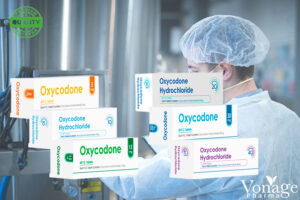methadone pricing is shaped by far more than raw materials and manufacturing costs — regulatory frameworks, reimbursement rules, prescribing restrictions, and market structure all play decisive roles. For pharmaceutical providers and procurement teams, understanding how policy levers change price dynamics is essential for planning supply, negotiating contracts, and maintaining access to medication-assisted treatment (MAT).
Below, I summarize the key mechanisms by which regulation affects methadone prices, highlight statistics from trusted sources, and point out practical implications for buyers (including the availability of formulations such as Methadone Hydrochloride 5 mg Tablets, Methadone Hydrochloride 20 mg Tablets, Methadone Oral Solution 25 mg/5 ml, and Methadone Hydrochloride 40 mg Tablets produced by Vonage Pharma).
1. Market size and trends — why price sensitivity matters
Global methadone market estimates vary by source but consistently show a growing market driven by expanded opioid use disorder treatment and chronic-pain management. Industry reports place the global market in the low hundreds of millions of USD (examples: IMARC estimated ~USD 132.9M in 2024; other reports range higher depending on scope). This growth trajectory matters because rising demand puts pressure on supply chains, which can amplify price volatility when regulations tighten or change procurement pathways. IMARC Group+1
2. Regulation narrows suppliers and raises per-unit costs
Regulatory requirements — GMP certification, controlled-substance licensing, import/export permits, and special manufacturing approvals — increase the fixed cost base for producers and distributors. When regulators add or enforce stricter manufacturing or distribution standards, some smaller manufacturers exit the market, reducing competition. Less competition typically translates into higher negotiated prices for bulk buyers and national procurement agencies. Economic models of opioid markets show that prescription and supply-side policies materially affect prices and market structure. hoover.org+1
Practical effect: In markets where methadone is tightly controlled (special registers, limited dispensing sites), procurement managers often face fewer suppliers and longer lead times, which pushes providers toward higher per-unit contracts or larger safety stocks.
3. Methadone Pricing Influenced by Reimbursement, Tendering, and Procurement
Many countries procure methadone through public tenders or reimburse it under national health insurance. Tender design (single-winner vs. multi-winner, contract duration, quality requirements) determines pricing pressure. Single-winner tenders can secure low short-term prices but increase dependence on one supplier; multi-winner tenders distribute risk but can yield higher baseline prices. Public procurement transparency and pooled purchasing (regional or international) can lower prices, while fragmented procurement increases administrative costs that are reflected in final prices. Empirical policy analyses show that procurement structure and reimbursement policies explain a large share of observed cross-country price differences. NBER+1
4. Prescription Controls and Their Impact on Methadone Pricing
Policies that tighten prescribing (e.g., limiting take-home doses, requiring supervised dispensing) influence demand patterns — sometimes reducing legitimate medical demand, sometimes shifting users to illicit markets. Studies and reviews indicate that regulatory shifts can change the elasticity of demand and lead to unintended price signals in both legal and illicit markets. When legal demand is restricted, manufacturers may reduce production runs or reallocate to higher-margin markets, which can raise prices where legal supply remains. Conversely, expanded access (through relaxed prescribing or expanded MAT programs) can increase volume and — if supply scales up — may reduce unit prices over time. PMC+1
5. Generics, intellectual property, and competition
Methadone is off-patent in most jurisdictions, so generic competition should, in theory, keep prices low. However, regulatory barriers to market entry (complex registration processes, dossier requirements, or differing national pharmacopeias) can slow generic uptake. When regulatory pathways are streamlined, generic entry lowers prices and improves availability. In contrast, slow or costly registration keeps prices high even in generic markets. Procurement teams should therefore factor regulatory timelines for product registration into long-term sourcing strategies. ScienceDirect+1
6. Exchange rates, import tariffs, and supply chain shocks
Even with stable regulation, countries that rely on imports are exposed to currency fluctuations, tariffs, and shipping disruptions. Regulatory changes that affect local manufacturing incentives (tax breaks, import duties, or export controls) will directly influence landed cost. In the last decade, several regions have seen price swings in substitute opioid products after supply shocks or policy shifts, illustrating how closely regulatory and macroeconomic factors are tied to final procurement cost. archive-ndarc.med.unsw.edu.au+1
7. Data points and illustrative statistics
-
Industry market estimates for methadone vary: IMARC reported a global market of ~USD 132.9 million in 2024, with projected growth to 2033; other market research firms report somewhat different baselines depending on inclusion criteria (formulations, geographic scope). Such divergence highlights the need to select consistent data sources when modeling procurement budgets. IMARC Group+1
-
Price references for methadone oral solutions in international essential medicines guides (e.g., MSH) show very low median unit costs in procurement datasets (example: methadone oral solution median unit price reported in some guides as a few cents per mL), indicating that bulk procurement in competitive tenders can yield low per-unit acquisition costs — but only where procurement and supply chains function well. Essential Medicines List
-
Clinical and policy literature confirms methadone’s standing as a core MOUD therapy and highlights that access policies (expanded MAT programs) are a key demand driver behind market growth estimates. NCBI+1
8. What procurement teams should do (actionable guidance)
-
Map regulatory requirements early — verify registration timelines, controlled-substance licensing, and GMP expectations in target markets before finalizing supplier lists.
-
Design tends to balance price and resilience — consider multi-winner frameworks or rotating suppliers to reduce single-source risk.
-
Use pooled procurement where feasible — regional purchasing consortia or multi-country tenders can improve bargaining power and reduce methadone pricing.
-
Plan for compliance costs — factor in the cost and time of import permits, cold-chain requirements (if any), and local distribution licensing.
-
Monitor policy changes — stay attuned to prescription regulations or public-health shifts that could rapidly change demand and supply balance. NBER+1
9. Vonage Pharma Product Note
Vonage Pharma provides trusted methadone formulations for pharmaceutical providers. Its product range meets diverse treatment needs and procurement requirements.
-
Methadone Hydrochloride 5 mg Tablets – A low-dose formulation ideal for dose initiation and gradual titration in maintenance or detoxification programs.
-
Methadone Hydrochloride 20 mg Tablets – Provides a balanced mid-range strength for stabilized patients in ongoing opioid substitution therapy.
-
Methadone Hydrochloride 40 mg Tablets – A high-strength oral tablet ensuring consistent plasma levels and extended therapeutic action for maintenance treatment.
-
Methadone Oral Solution 25 mg/5 ml – A flexible liquid formulation that allows precise dosing and rapid onset, suitable for clinical or program-based administration.
When evaluating suppliers and quotations, healthcare procurement teams should look beyond unit pricing. Consider lead times, GMP and COA documentation, and compliance with controlled-substance regulations. Also, review the manufacturer’s capacity to support tenders and meet international regulatory requirements.
Conclusion
Regulatory policies strongly influence methadone pricing in international markets. They include manufacturing standards, controlled-substance scheduling, procurement design, and prescription rules. For pharmaceutical providers and procurement managers, an effective pricing strategy requires a mix of regulatory foresight, tender design savvy, and supplier resilience planning. Use consistent market data, monitor policy trends, and design procurement processes that balance cost with access and supply security.







